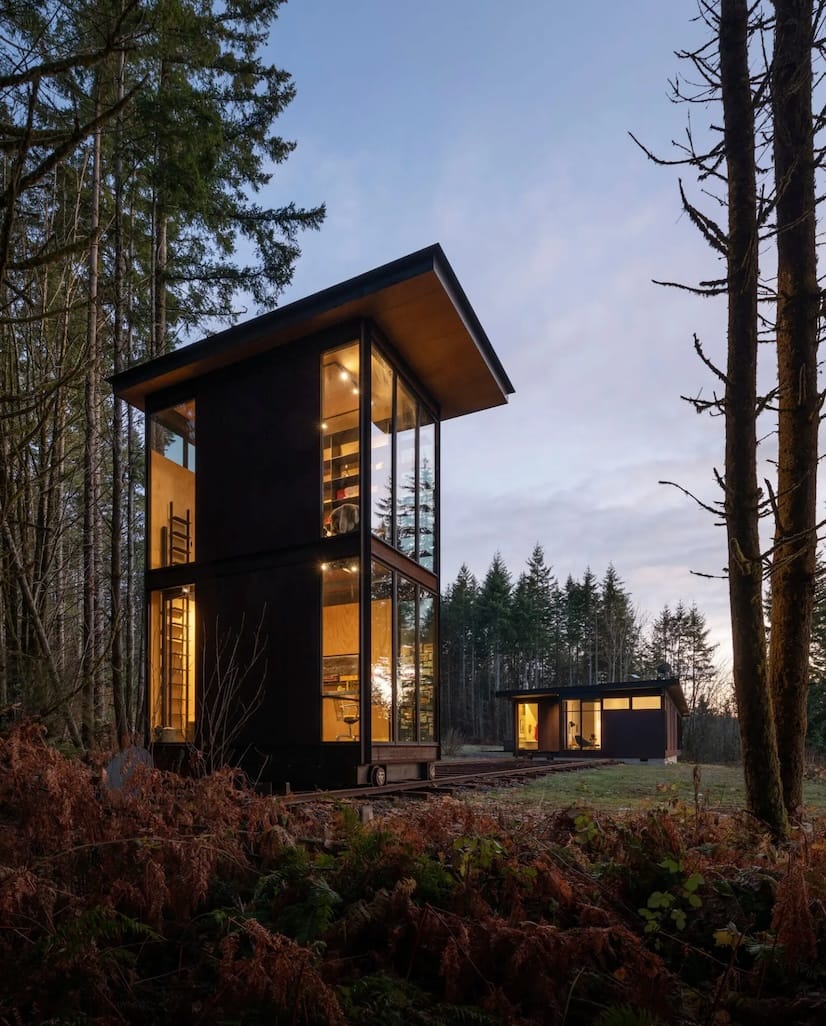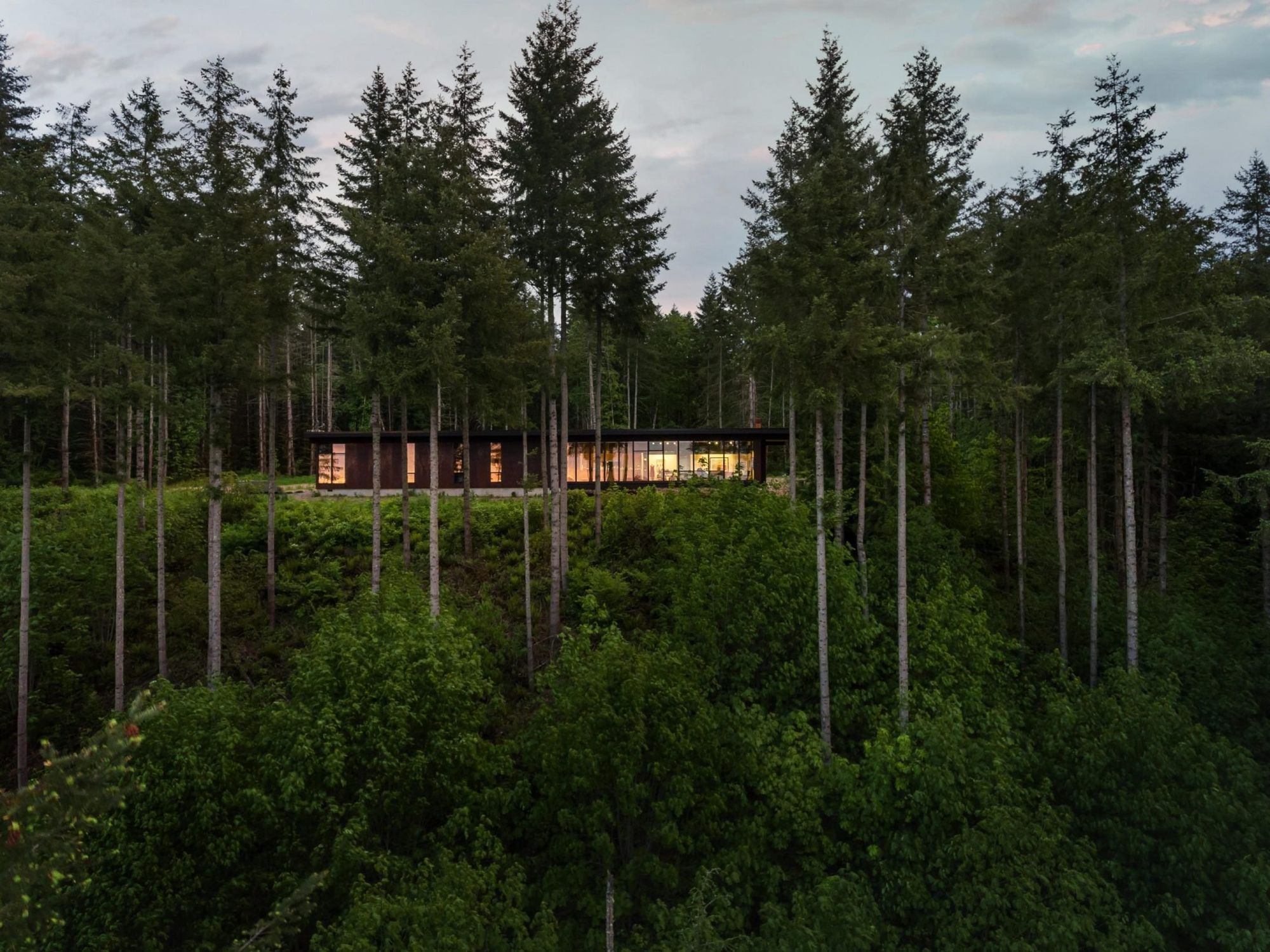Inspiration: The Maxon House: A Detachable Studio on Rails and the Art of Inspiration

Part of an interior designer's job is to look for inspiration. While most of us can't afford to have a house that rolls away on railway tracks, especially in space-starved places like Singapore, we can still take small components and ideas from such designs. So, let's talk about the Maxon House, a project that's as intriguing as it is luxurious.
The Concept
Designed by Olson Kundig Architects, the Maxon House features a studio that's attached to the main house but can be rolled away on railroad tracks to be closer to the trees. The two-storey structure is based on the design of a "traditional caboose." The first level serves as a workspace, while the second level is a "calmer zone for creative exploration and restoration" (source).
The Details
The control panel that operates the rails was taken from a Burlington Northern locomotive. The wood and door colour were inspired by materials commonly found on American trains. The railroad ties for the track were repurposed from the Great Northern Railroad line. The design even takes visual cues from Wes Anderson's love of trains in cinema, specifically from "The Darjeeling Limited."
The Bigger Picture
The Maxon House is set on 41.5 forested acres in the Pacific Northwest. The project aims to inspire, educate, and inform future architecture adventures regardless of scale, cost, or complexity. Maxon Railway, the company behind the kinetic rail car studio, runs on reclaimed Great Northern Rails and aims to honor the history of railroading in Tolt, Washington.

Why It Matters for Interior Designers
You might be thinking, "This is all very cool, but how does it apply to me?" Well, the Maxon House and its detachable studio offer a plethora of design elements that can be adapted for smaller spaces. Imagine a room in your home that could be easily reconfigured to serve multiple purposes, or furniture that could be moved effortlessly to create new layouts. The key takeaway here is adaptability and the clever use of space—something we can all appreciate, especially in compact living environments like those in Singapore.
Final Thoughts
While we may not all have the resources to build a house with a detachable studio on rails, the Maxon House serves as a fascinating case study in innovative design. It challenges us to think outside the box and consider how we can incorporate elements of adaptability and luxury into our own spaces, no matter how big or small.
So, the next time you're scrolling through design blogs or Pinterest, remember that inspiration can come from the most unexpected places. Even a house on rails.
